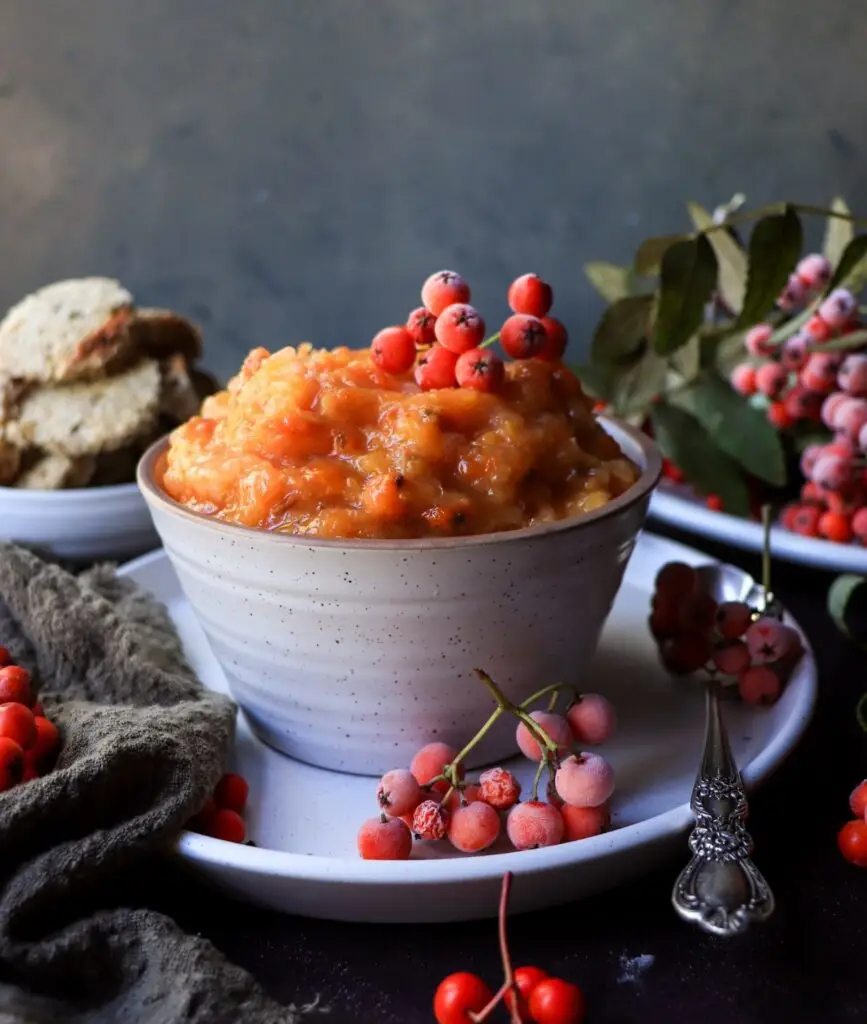
Sweet, tart, fresh, and with a pleasant hint of bitterness – that’s what you can expect from this tasty and unique Orange Rowan Berry Jam.
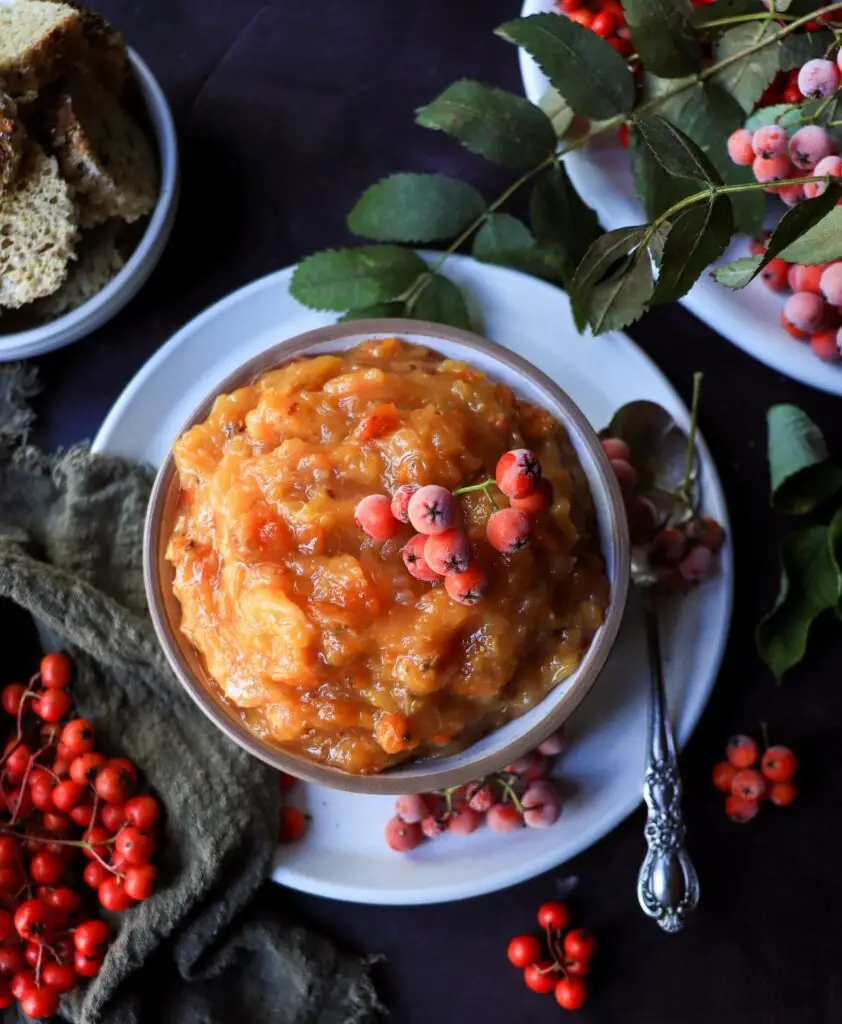
Hey, folks! I hope you all are well and enjoying the last summer days.
Today, I am thrilled to share with you a unique recipe ingredient that you probably did not know you can use in cooking. I am talking about rowan berries and this delightful Orange Rowan Berry Jam. Let’s dive in!
What Are Rowans?
Rowans are shrubs or trees in the genus Sorbus, in the rose family Rosaceae. If you live in North America, particularly in Newfoundland and Labrador, you may also hear the name dogberry (which is the species called American Mountain-ash; it is the same family). While rowans and mountain-ashes are considered ornamental trees, not everyone knows that the berries are edible.
Are Rowan Berries Edible?
Well, if you Google this question, you will find quite a few “no”, which is partly true. This statement comes from the fact that when consumed raw, the berries are not palatable, as well as the fact that in the raw state, they contain cyanogenic glycosides, which are common in other related plants in the Prunus/Rose family, e.g., cherries, apricots, and almonds. Cooking denatures the glycosides, making the fruit completely safe to eat.
They are also edible raw in small amounts. But honestly, I doubt that anyone can eat more than a few raw berries at once. As I said, they are bitter. Depending on the variety of a tree, the bitterness could vary from moderate to very strong.
How to Reduce the Bitterness in Rowan Berries?
The tricky part is to wait as long as possible before picking the berries. While they become red or orange sometime in mid-August, you should wait until September or longer. When ripening, their bitter taste diminishes, as well. Indeed, it is often considered that they are at their best just after the first frost. However, you can have a huge competition – birds – so sometimes you can’t wait.
Hence, there is a trick to place freshly picked berries in the freezer overnight. This will not completely remove the bitterness, but it will become significantly milder and more pleasant.
Health Benefits and Side Effects
Rowan berries are not just delicious, they also pack a nutritional punch. They can boost your immune system, increase metabolism, strengthen the respiratory system, improve digestion, and reduce the risk of various infections.
However, remember that raw berries contain the acid and the cyanogenic glycoside, which could cause indigestion and kidney problems. The good news is that heat treatment or freezing transforms para-phenylenediamine into harmless sorbic acid.
Anyway, I strongly encourage you to do your research and consult with your physician to determine whether rowan berries are good for you.
What is the Taste of Rowan Berries?
As mentioned earlier, raw rowan berries have a unique taste profile – bitter and astringent. Cooked or frozen, they transform into a fruitier, more pleasant taste. Their tangy, slightly bitter profile is often compared to cranberries, with subtle citrus undertones. When made into jams or jellies with sugar and other fruits like apples or oranges, the flavor becomes a balanced mix of sweet, tangy, and subtly bitter, creating a unique and exciting taste experience.
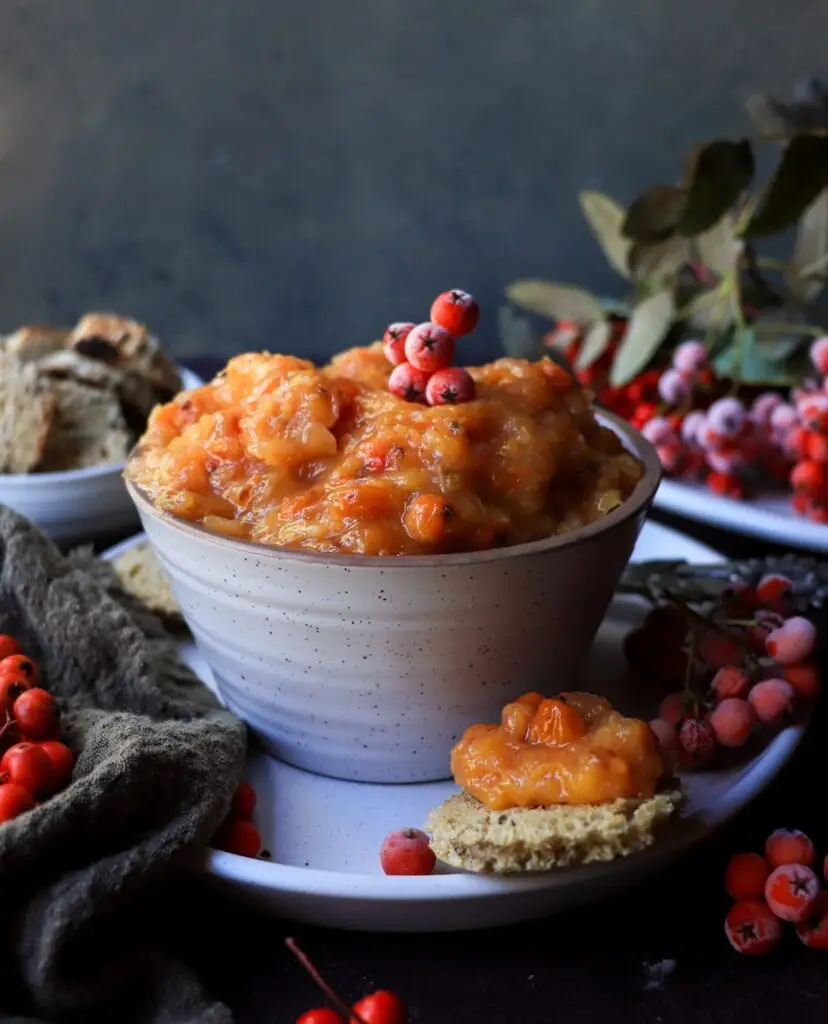
Ingredients You’ll Need for Orange Rowan Berry Jam
Hence, the combination of orange and rowan berries is nice and balanced in this recipe. To make Orange Rowan Berry Jam, you will need the following ingredients:
- Rowan Berries – When foraging, always go for the bright red or orange berries as these are ripe and will come away from the little twigs easily. Also, collect them in the forested areas far from roads. Next, freeze the berries overnight or up to 24 hours. This step will reduce bitterness and neutralize harmful para-sorbic acid and cyanogenic glycoside.
- Oranges – Their citrus flavour goes well with subtly bitter, citrusy notes of rowan berries. They are also high in pectin – a natural gelling agent helping jams to thicken. That’s why this recipe does not call for additional pectin.
- Sugar – Use granulated sugar as the sweetener.
- Orange Liqueur – This is an optional ingredient, but it adds a little something special.
How to Make Orange Rowan Berry Jam?
That’s easy.
Forage, clean, and freeze some rowan berries. Freezing will reduce bitterness and neutralize harmful para-sorbic acid and cyanogenic glycoside. Then, combine the frozen berries with orange juice (with pulp), sugar, and water and simmer for a while.
More Recipes with Rowan Berries
And be sure to check more rowan berry recipes:
- Rowan Berry Tea with Honey and Orange
- Rowan Berry Apple Jam
- Rowan Berry Cocktail (Halloween Cocktail Recipe)
- Rowan Berry Syrup (And How to Make Rowan Berries Less Bitter!)
I hope you enjoy this Orange Rowan Berry Jam and will give this recipe a try. If you try it, please let me know in the comment section below, send me an Instagram message, or share your photos by adding the hashtag #havocinthekitchen.
Cheers!
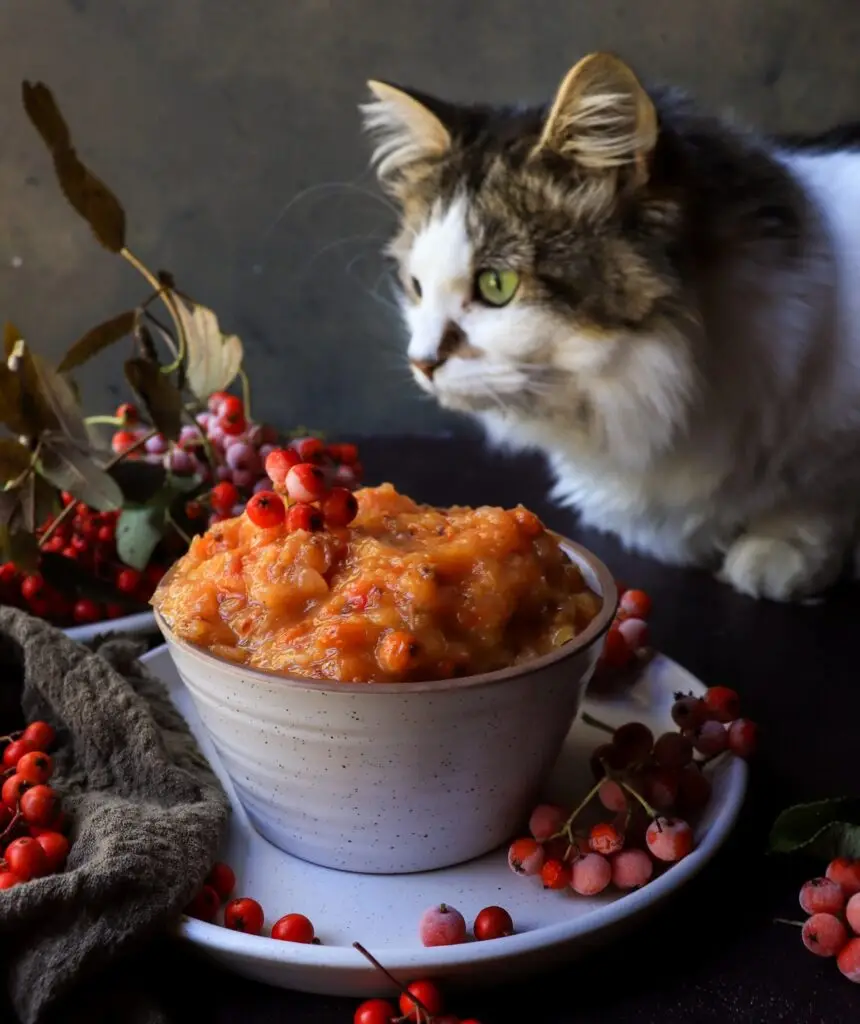



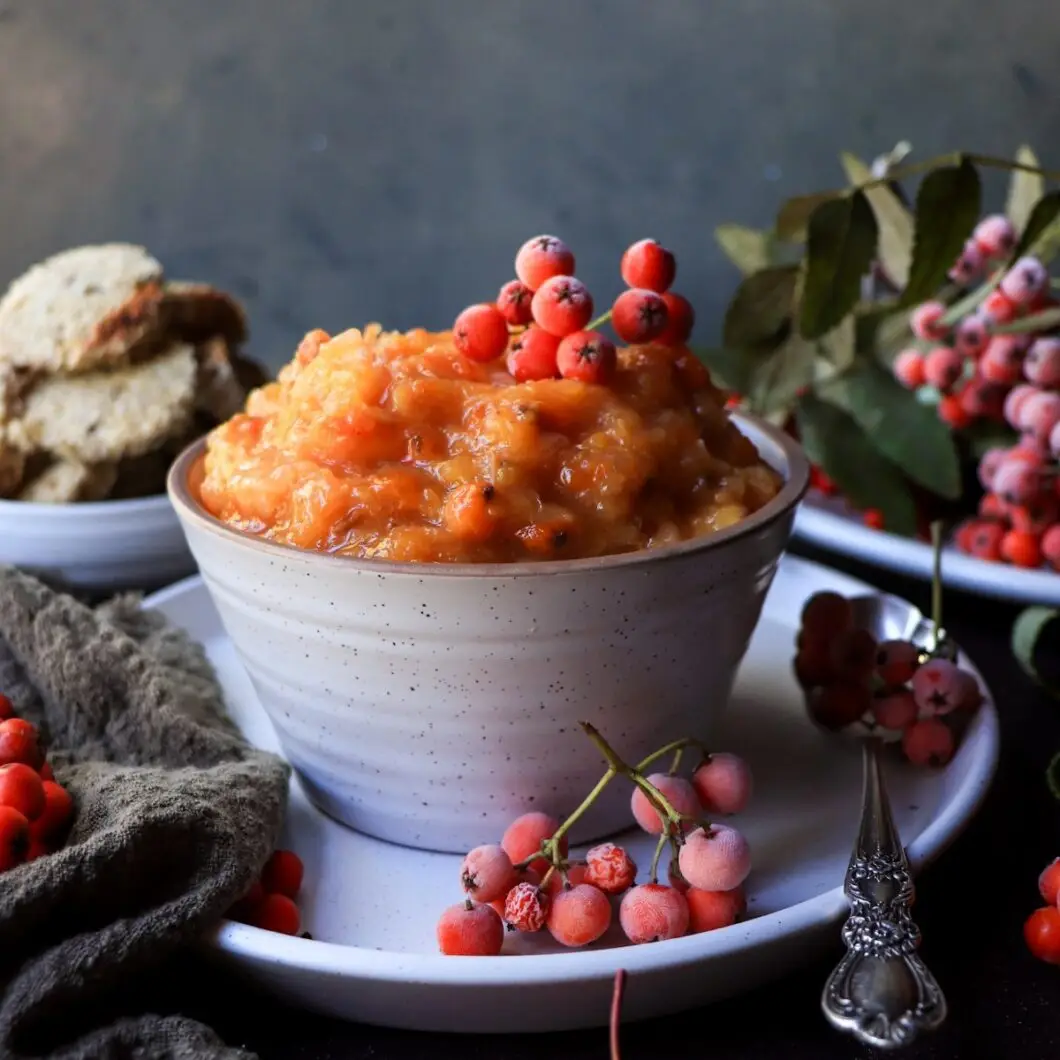


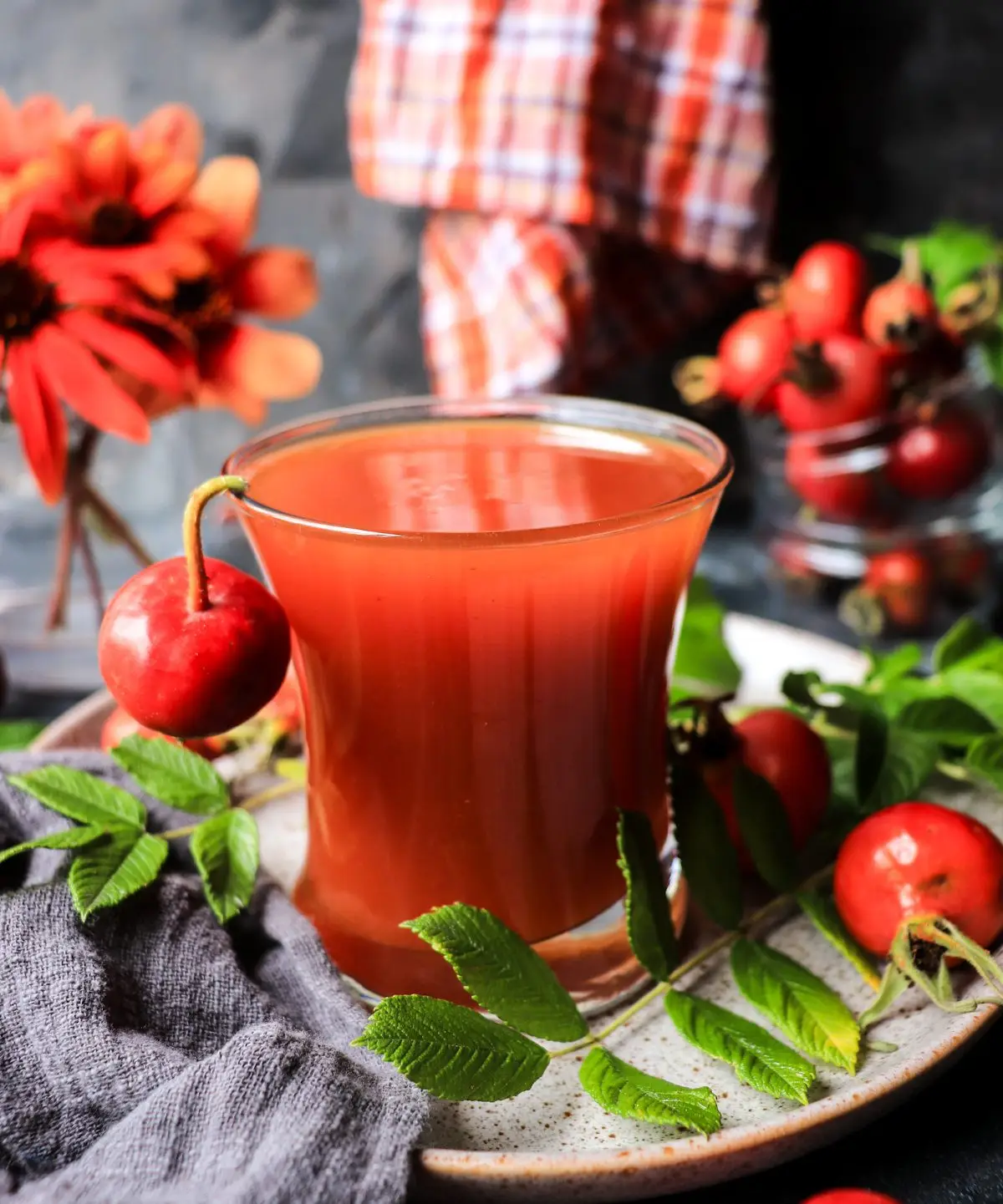
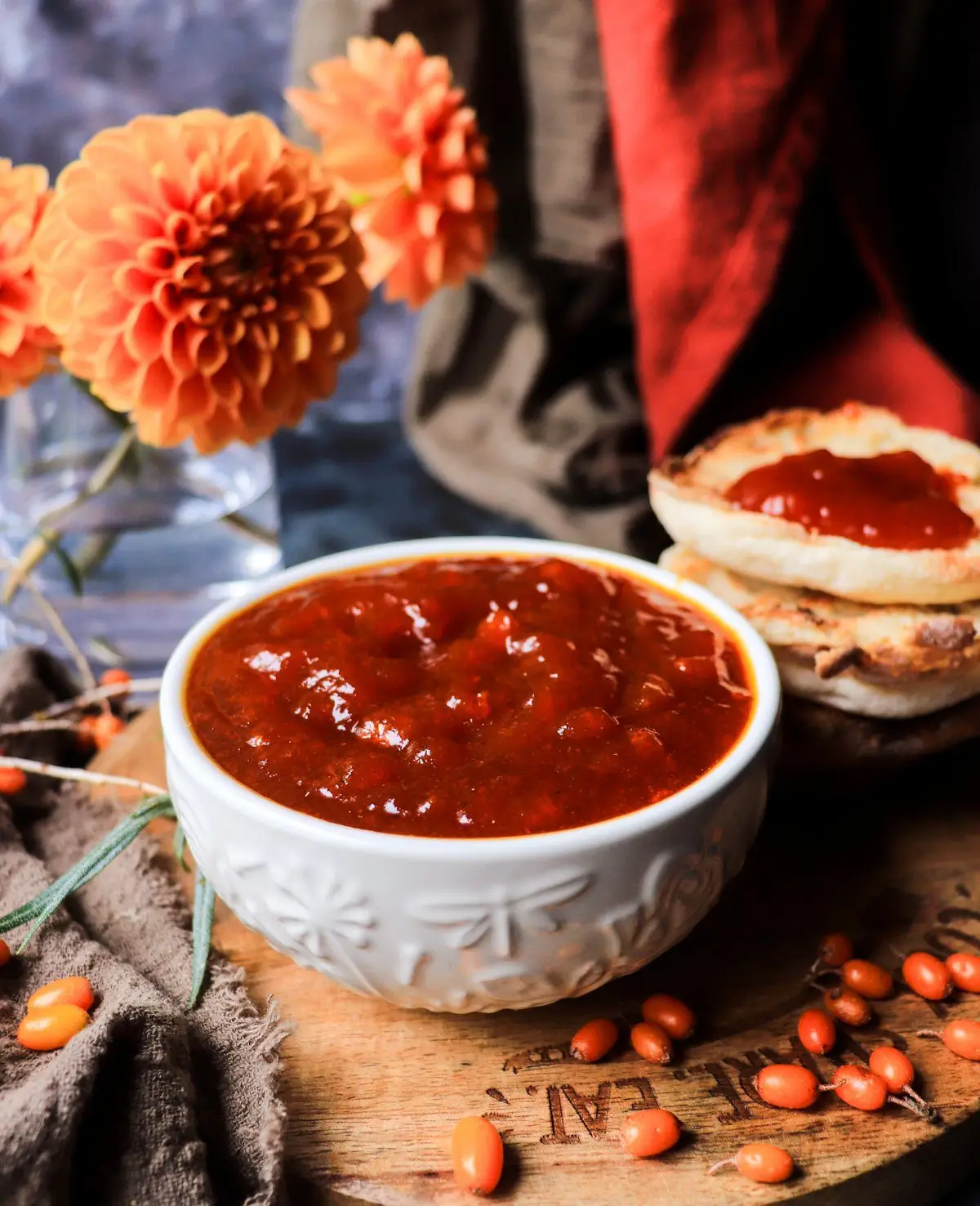
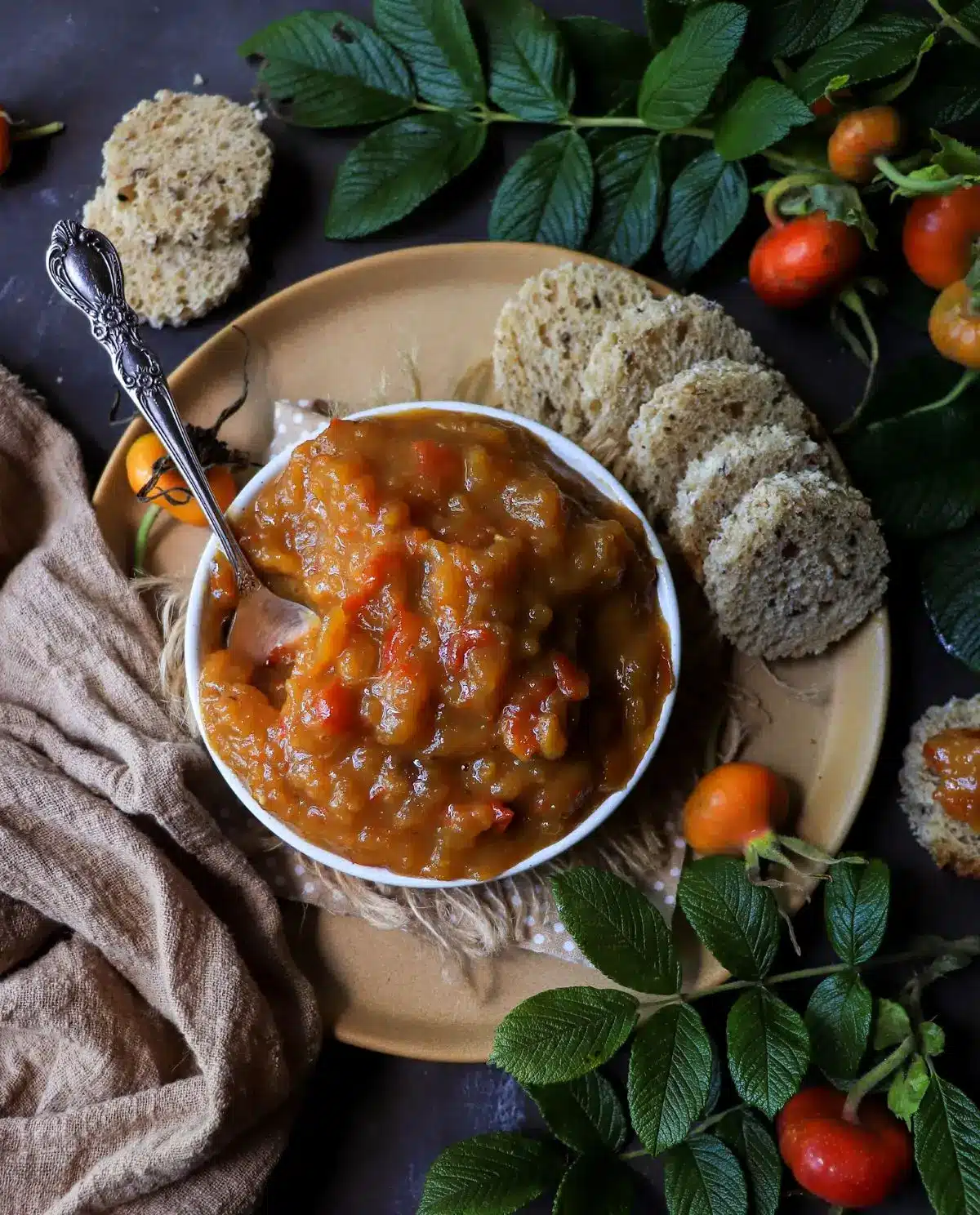
This is my first time hearing about Rowan berries and I am so fascinated. I don’t think I’ve seen these here in Atlanta, Georgia. But, I hope to make a trip to Canada next year and will be looking fr them. Delicious sounding jam and LOVE your photos, Ben!
I am definitely not a forager! I would be afraid that I would poison myself not knowing if it’s really good to eat or not. This looks really good and your presentation set up is beyond!! Great post.
I not only like the way you present this jam, but orange jam is one of my favorite! I didn’t know Rowan berries, thanks for the discovery.
Thank you, Julia. If you like the taste of bitter orange marmalade, you will love this jam to; rowan berries create add the similar bitterness.
I’m having a lot of trouble commenting Ben. I’ll keep trying .
Hi Pauline,
Sorry you had issues; WordPress and its plugins can be unpredictable. At least one comment made it through (thanks to your determination, haha), so hopefully it will be easier next time.
A new berry for me too! I have probably seen them somewhere here but didn’t identify them as edible fruit..thanks, Ben, for introducing a new fruit to us.
Thank you Angie! These berries do have the character (unique bitterness), so if you find some – give them a try.
What a great recipe, Ben! I had never heard of Rowan berries before, though I have had mountain ashes on my property when I lived up north in New York State and Maine. I had no idea those berries were edible when cooked. Thanks for teaching us this great information.
Thanks, David! I did not have a chance to collect any berries this season; I suspect that, due to the dry summer, the trees produced very little fruit, and the birds were the first to eat it. But I have another recipe (or two?) from last fall, so please stay tuned :)